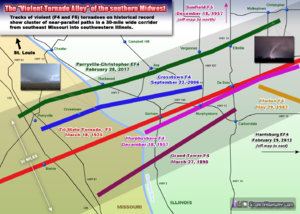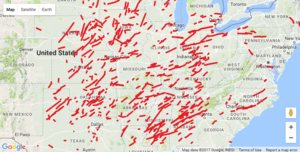Dan Robinson
EF5
I just posted this blog with an updated version of a map I made for the Tri-State Tornado 90th anniversary, showing the remarkable cluster of near-parallel F4 and F5 tornado tracks in a small 30-mile corridor in Missouri and Illinois. Last week's EF4 is the latest one to fall into this area.
http://stormhighway.com/blog2017/march917a.php

Also - if you plot all F3 tornadoes on http://www.tornadohistoryproject.com, there is a large cluster of F3s in nearly the same place!
http://stormhighway.com/blog2017/march917a.php

Also - if you plot all F3 tornadoes on http://www.tornadohistoryproject.com, there is a large cluster of F3s in nearly the same place!
Last edited:

